Pancakes Revisited |
Story location: Home / food_and_drink / |
| 29/Apr/2014 |
We have been making a lot of pancakes recently, mostly variations on the extra-fluffy pancake recipe I discovered a few weeks ago. I went back to the original recipe, which used plain flour instead of self-raising:
- 2 1/2 cups of plain flour
- 1/2 tbs baking powder
- 1/2 tbs sodium bicarbonate
- 2 tbs sugar
- pinch of salt
- 2 cups of milk with a few splashes of lemon juice
- 2 egg yolks
The egg whites are whisked first until they become white and fluffy but I realised that it's possible to over-whisk them. If they become too firm and almost meringue-like, they won't mix into the rest of the batter properly.
The rest of the ingredients are mixed together then the egg whites are folded in. I find it easier to cook the pancakes using two frying pans: start them off in a small pan then lift them onto a plastic turner and flip them over into the larger pan to cook the other side.
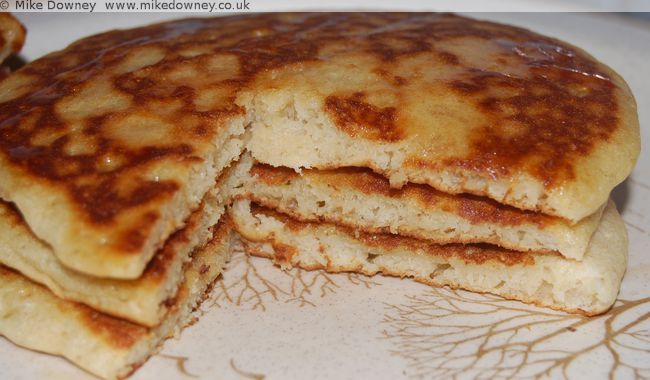
My most recent pancake experiment was to make crepes. The recipe was based on one by Nigel Slater:
- 50g butter
- 100g plain flour
- a pinch of salt
- 2 medium eggs
- 350ml milk
Melt the butter then leave it to cool slightly. Sift the flour and salt into a bowl, add the eggs then gradually whisk in the milk. Finally mix in the melted butter.
It took a couple of goes to get the technique right. For the first pancake I tried to turn it over in the same pan but it tore and folded over. Eventually I managed to find a way which worked for me, which uses two pans a bit like above.
Put half a ladle of batter into a small 7-8 inch pan, give the pan a gentle swirl so the batter covers the pan. After a minute or so, when the batter has started to set, loosen the edges of the pancake so it moves freely. Hold the second pan over the top then turn the pans over so the crepe falls into the second pan, uncooked side down.
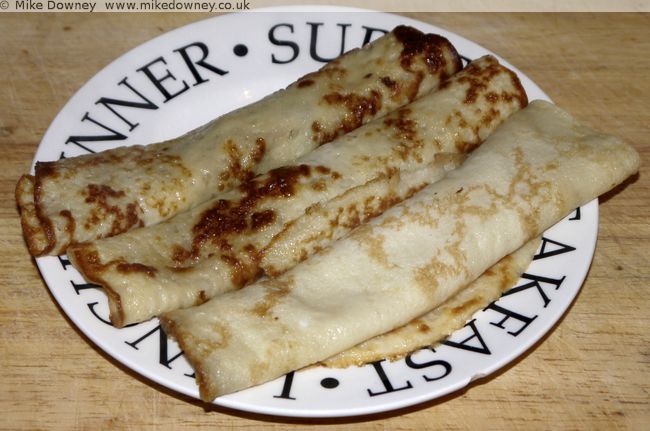
For a first attempt, we were very happy with the results. We had them as sweet pancakes but next time we might do some with a savoury filling, possibly covered with sauce or melted cheese and baked for a few minutes in the oven.
Regional Cakeathon H: Hertfordshire Pope Lady Cakes |
Story location: Home / food_and_drink / a_to_z / |
| 14/Apr/2014 |
I can't remember where I first came across this cake but while doing some research I kept finding two different versions of the recipe. One uses egg whites and is baked in a loaf tin whereas the other is a yeast cake and is formed into 'lady' shaped buns.
I started by following the latter recipe but it came out as a very sticky batter instead of the expected dough.
After leaving it to rise overnight I put half in a loaf tin then worked in extra flour until it was a bit easier to handle. I then shaped into the lady shapes as described in the recipe. Unfortunately none of the recipes on the Internet had photos so I don't know if mine looked anything like the originals. One of the cakes looked more like an Owl.
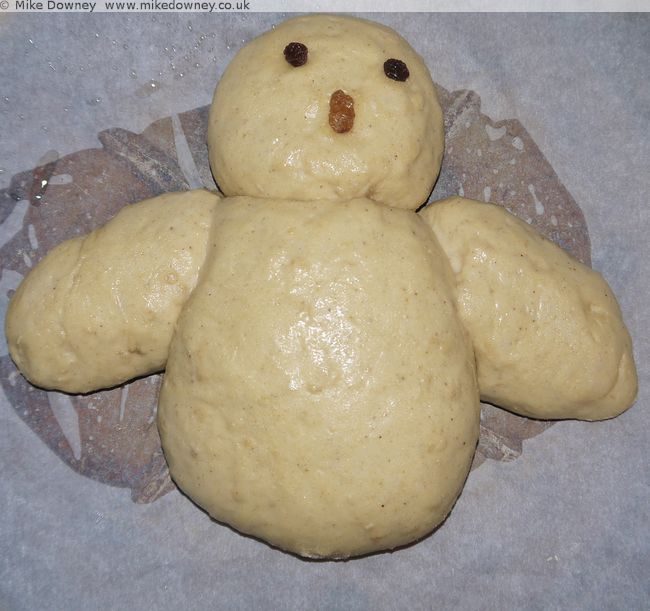
They were probably more like Two Fat Lady Cakes. We tried one and it was a fairly decent light bun with a hint of spice. When we tried a slice from the loaf version. It was light and crumbly and would make a good sponge cake.
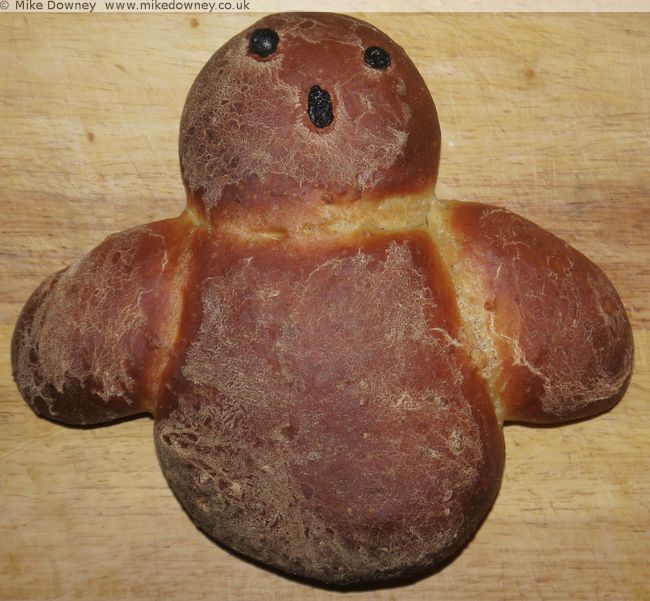
The Recipe
- 1 cup of milk
- 1/4 cup of sugar
- pinch of salt
- 3 tbs oil or melted butter
- 1 tsp dried yeast
- 1 tsp mixed spice
- 2 eggs
- between 3-4 cups of flour
Mix everything together and leave to rise overnight. Knock it back then make into buns.
This version of the recipe from the same site as above has a drier dough and gives better instructions on shaping the cakes:
Divide into 12 equal balls about 2 1/2 inches across. Cut each ball in half. Flatten one of the halves and shape into an oval for the body. Divide the other half of dough in two; make a round ball for head. With remaining dough make pencillike ropes 4 inches long. Cut in half for 2 arms. Press head and arms to body. (There are no legs.) Press raisins or currants deeply in place for the eyes and nose.
I could not find any pictures of the final cakes anywhere so I don't know how authentic mine look. Some web pages have recipes taken from books and refer to illustrations which aren't reproduced on-line.
Update: I've just been sent another version of the recipe which is very similar to the one I followed but mentions crossing over the arms. Like the others, the page contains a history of the cakes copied from a book and again, there is no picture of the finished cakes.
Regional Cakeathon G: Goosnargh Cake |
Story location: Home / food_and_drink / a_to_z / |
| 06/Apr/2014 |
Many years ago, on the way home from a holiday Up North, we stopped at the village of Goosnargh. I think we mainly went there because of the unusual name. I remember that we took a photos in and around the churchyard but don't remember anything of the village itself.
The Goosnargh cake is another variation on the shortbread recipe. At first I thought it was the same as Aberffraw Biscuits with the addition of caraway seeds but upon a closer look the recipes use different proportions of butter, sugar and flour (2:3:6 sugar, butter, flour, whereas the Aberffraw biscuits are the easier to remember 1:2:3).
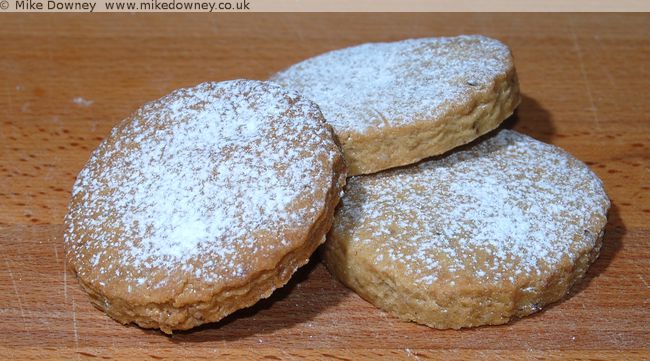
These biscuits came out crunchier and a bit darker. I may have slightly over-baked them but the colour may have been down to the mixture of regular and dark sugar I used (since one of the recipes I found called for golder caster sugar).
